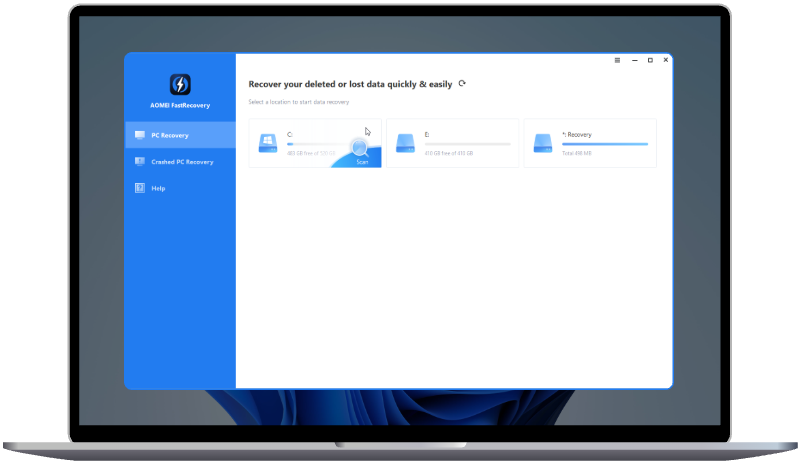Python Delete File: Mastering the Art of File Deletion
In this comprehensive guide, we'll delve into the nuances of the python delete file command, offering insights, tips, and expert advice to help you navigate the process seamlessly. Whether you're a seasoned programmer or a curious beginner, this article will empower you with the knowledge to handle file deletion with confidence.
Introduction
Python, a versatile and powerful programming language, offers robust tools for file management. Whether you're a seasoned developer or a coding novice, understanding how to delete files in Python is a fundamental skill. In this article, we'll explore the intricacies of file deletion, covering various scenarios and best practices.
Understanding the OS module
At the heart of Python's file management capabilities is the os module. This module provides a wealth of functions for interacting with the operating system, making it an essential tool for file and directory operations. Let's delve into the basics of using the os module for file deletion.
Checking if a file exists
Before diving into file deletion, it's crucial to check if a file exists. Python simplifies this process with the os.path.exists() method. This method returns True if the specified file path exists, allowing us to proceed with confidence.
Deleting a file in Python
The core of file deletion in Python lies in the os.remove() method. This straightforward function removes the specified file, providing a seamless way to clean up unnecessary files within your code.
Handling exceptions
While deleting files, it's essential to anticipate and handle potential errors gracefully. By incorporating try-except blocks, your code becomes more robust, ensuring a smoother user experience and preventing crashes due to unforeseen issues.
Deleting files with specific criteria
Python enables you to delete files based on specific criteria, such as file size, creation date, or file type. This level of customization empowers developers to create efficient file management systems tailored to their project's needs.
The shutil module
For more complex file operations, the shutil module comes into play. This module offers additional functions for high-level file and directory operations, enhancing the capabilities of Python's file management.
Safeguarding against accidental deletions
To prevent unintentional file deletions, implement safety measures. Consider creating backup mechanisms or prompting users for confirmation before proceeding with file deletion. This extra layer of precaution ensures data integrity and avoids irreversible actions.
Deleting multiple files
Efficiency in file deletion becomes crucial when dealing with large datasets or multiple files. Python provides techniques for bulk file deletion, streamlining the process and optimizing code performance.
Permanent vs. temporary deletion
Understanding the difference between permanent and temporary file deletion is paramount. Be cautious when implementing deletion operations, especially if the files contain valuable information. Always strive for clarity in your code to avoid unintended consequences.
Best practices for file deletion
Maintaining clean and organized code is essential in any programming endeavor. When it comes to file deletion, adhere to best practices, such as using meaningful variable names, commenting your code, and following Python's style guide (PEP 8).
Deleting read-only files
Deleting read-only files presents a unique challenge. To overcome this, utilize the os.chmod() method to modify file permissions before attempting deletion. This ensures flexibility in managing even the most restricted files.
Cross-platform considerations
Python is platform-independent, but nuances may arise when dealing with file paths and permissions on different operating systems. Consider these differences when developing cross-platform applications, ensuring compatibility across various environments.
User prompts and confirmations
Enhance the user experience by incorporating prompts and confirmations before deleting files. By communicating with the user, you reduce the risk of accidental deletions and provide a more user-friendly interface.
Conclusion
In the dynamic landscape of Python file management, mastering the art of file deletion is a crucial skill. From the basics of the os module to advanced techniques with shutil, this article has equipped you with the knowledge needed to navigate the intricacies of file deletion in Python. Remember to implement best practices, safeguard against accidents, and always strive for code clarity.
FAQs
Can I recover deleted files in Python?
While Python itself doesn't provide native recovery features, implementing backup mechanisms can help restore deleted files.
What happens if I try to delete a non-existent file?
If you attempt to delete a file that doesn't exist, Python will raise a FileNotFoundError. Ensure the file exists before deletion.
How can I delete all files in a directory using Python?
Utilize the os.listdir() method to get a list of files in the directory, then loop through and delete each file using os.remove().
Is there a way to delete files based on their creation date?
Yes, you can use the os.path.getctime() method to retrieve a file's creation time and delete files based on specific date criteria.
What precautions should I take before deleting files in Python?
Always back up important files, use user prompts for confirmation, and consider implementing a trash or recycle bin feature to prevent irreversible deletions.

